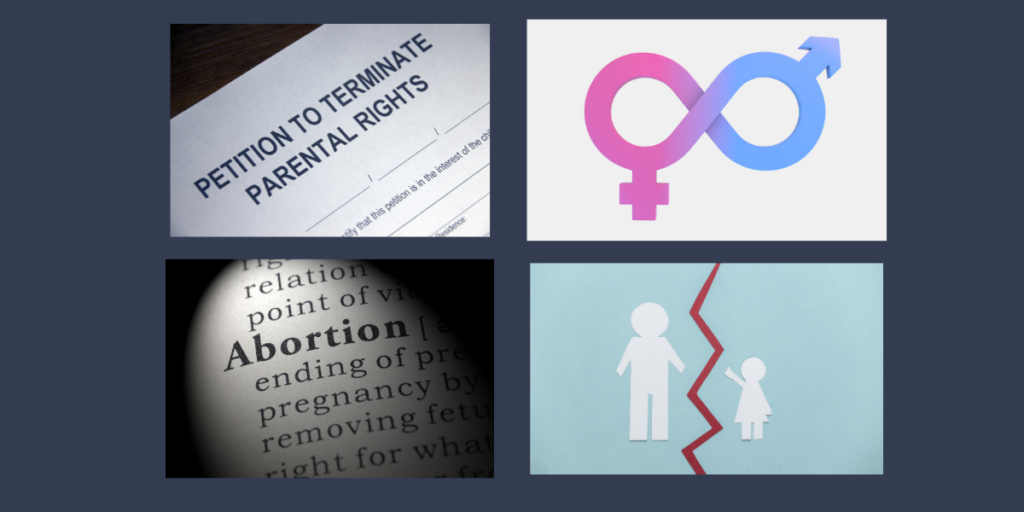
Few Legislative Proposals Do More to Decimate Women’s, Children’s and Parents’ Rights than the Constitutional Amendment on Ohio’s November Ballot
By: Lisa Murtha
Proponents of amending the Ohio constitution this November have framed it as a simple “reproductive rights” issue. But the proposed amendment’s official name – the “Right to Make Reproductive Decisions Including Abortion Initiative” – reveals the framers’ clear attempt at legislative sleight of hand. (emphasis added)
The moment the amendment’s language was officially released, even a Washington Post columnist became concerned. Kathleen Parker won a Pulitzer in 2010 and is identified on her website as the most widely syndicated columnist in America. Though she is admittedly “pro-life,” she does not fit neatly into any political category and writes for one of the most openly left-leaning newspapers in the world. Her March 31 column, “In Post Roe America, Weird Changes Might Be Coming To Abortion Law,” sounds off massive alarm bells and describes in detail facets of this proposed amendment that should terrify parents and women alike, both statewide and across the nation.
Parker starts the piece by emphatically noting the proposed Ohio amendment would “slyly open the door to much more” than just abortion, pointing to both included and excluded language.
For starters, she goes on to note, “my antennae shot up when I saw the abortion amendment doesn’t mention women,” but rather “pregnant patients.” Though seemingly an innocent nod to acceptance of all sexual identities, the verbiage, in legal terms – which are crucial for all Ohioans of voting age to understand right now – is “an unsubtle hint,” says Parker, that the amendment isn’t wholly intended to protect a woman’s right to choose.” (emphasis added)
In other words, the language diverts readers by appealing to their emotions, while – in reality – it could very easily be weaponized by “protect[ing] access to all sorts of medical interventions, including sex-change surgery or sterilization…” but not just for consenting adults.
In perhaps the most disturbing form of what Parker calls “wordplay,” age is never mentioned in the proposed amendment, meaning that “children could have unfettered access to surgical procedures, including abortion, without parental interference,” says Parker. (emphasis added).
For those who think this is only about abortion, consider that transgender surgeries skyrocketed fourfold between 2000 and 2014 and tripled again between 2016 and 2019 as this MSN article notes. Gender surgeries are also a growing source of revenue for places like Planned Parenthood and Cincinnati Children’s Hospital, which has an entire department dedicated to it that was initially funded by a grant from the founders of sex toy company Pure Romance.
Another strong linguistic warning flag is the legislation’s use of the word “individual” – again, a seemingly virtuous nod to acceptance which is instead a legal poison pill.
As noted by Civil Rights and Constitutional Law attorney and President of Greater Cincinnati Right to Life, Rachel Citak, in a court of law, such purposefully vague language can and will give people of all ages – including children of all ages – the ability to make life-altering decisions regarding anything to do with “reproductive health” and to cut their parents 100% out of those same decisions.
Citak also notes that those who think the state replacing parents couldn’t happen in Ohio may not know about the 2018 Cincinnati case where it already did. Hamilton County took custody of a Northwest Local student away from the biological parents in order to allow the minor access to life-altering puberty blockers and surgeries from Cincinnati Children’s Hospital (CCHMC). The parents had unknowingly taken their child to CCHMC for treatment of psychiatry and depression. The staff there quickly rendered a diagnosis of gender dysphoria, recommending everything from psychotherapy to hormone therapy to “surgical intervention to change sex characteristics.” In her trial notes, Judge Sylvia Sieve Hendon expressed concern that 100% of the patients who are referred to CCHMC’s transgender program director are deemed “appropriate candidates for gender treatment.”
Additional verbiage in the amendment indicates that abortion at all stages of pregnancy – even up until birth – would become fully legal in Ohio if the amendment passes. Parker fails to note that the amendment says the procedure may be prohibited after fetal viability. “The problem, Citak points out, is that “it doesn’t say ‘shall,’ it says ‘may.’ In no case is [abortion] allowed to be prohibited—even after viability— if the abortionist says so. That means all 9 months.” Citak also explains that “the amendment creates a conflict of interest, granting the “treating physician” authority over deciding whether an abortion is advisable, which leaves parents out of the process and gives the abortionist—who profits from the procedure—ultimate authority.”
Those who don’t have children but are champions of women’s health and rights should also be concerned at the wording of the amendment. “What’s also clear is that these abortion ‘protections’ would remove regulations that are now in place,” writes Parker, “such as requirements that abortion clinics meet hospital standards for patient care. Or that a hospital be nearby.”
Women have been told for decades that, without Roe v. Wade, they will be forced to have “coat hanger abortions in back alleys.” Ironically, this amendment actually works to undo even the most basic medical safeguards and protections currently in place for women, making the modern-day equivalent of “back-alley coat hanger” abortions all but guaranteed. Citak notes that “this includes even the most basic guarantees that the person performing the abortion is a physician, and further that this physician has access and admitting privileges to a nearby hospital for emergency care.”
Consider the 2021 case of a 20-year-old Cleveland woman who required emergency treatment after a perforated uterus during an abortion at Cleveland’s Preterm Abortion Clinic. Or the case of Lakisha Wilson, another patient at the same facility who died during her abortion, on the operating table, from cardiac arrest. Ultimately, Citak believes, pro-abortion and transgender-surgery proponents will try to use the new amendment to argue that “the [state’s current] health & safety regulations get in the way of the alleged ‘health’ of the woman or child.”
More wording in the amendment – “The State shall not, directly or indirectly, burden, penalize, prohibit, interfere with, or discriminate against either an individual’s voluntary exercise of this right (to abortion, fertility treatment, continuing one’s own pregnancy, miscarriage care and abortion) or a person or entity that assists an individual exercising this right.” — will also legally protect pedophiles, rapists and human traffickers alike. “This amendment will shield those individuals,” says Citak, “because, again, of this ‘shall not’ language forbidding any ‘interference.’ Whether the victim is a victim of human trafficking or abuse, woman or child – this amendment protects abusers, pimps and traffickers while penalizing parents.”
Regarding rape, Parker’s article cites an Ohio case – a soccer coach impregnated a 14-year-old and took her for an abortion without her parents’ knowledge – as a “cautionary tale;” Cincinnati attorney Brian Hurley represented that young woman and her family and resolved, to their satisfaction, his clients’ claims against Planned Parenthood, which performed an abortion on the minor without her parent’s’ knowledge or consent.
If the November Amendment passes, notes Hurley, Ohioans should look north to Michigan, which enshrined the right to abortion in its constitution in 2022, to see what will happen next. “I have no doubt that in Michigan plans were immediately implemented to have that state’s parental consent statute found to violate its constitution,” says Hurley. Citak also adds that abortion proponents in Michigan have already initiated demands and efforts to obliterate parental consent, as detailed by Michigan Advance.
Here in Ohio, Hurley notes, “If the proposed amendment passes, within a very short period of time a lawsuit will be filed challenging Ohio’s parental consent statute”- essentially by claiming that statute now interferes with the right to abortion under the newly amended state constitution. Ultimately, he says, “the amendment will also be used to attempt to eliminate Ohio’s abortion informed consent statute and the duty of abortion providers to notify law enforcement of sexual abusers of girls and women who are pressured or coerced by their abusers to have an abortion.”
It will also protect those adults – doctors and activists alike – who convince children to have irreversible, life-altering “sex change” surgeries, or take drugs with similar effects.
19-year-old “gender-change” surgery survivor Chloe Cole explained the draw of such surgeries in particular at a recent talk in Norwood, Ohio, where she described her former self – a nine-year-old who went through puberty way too early and was terrified of the responsibilities and burdens that came with being a woman, while in so many ways she was still a child. In fact, many children are initially fearful of the bodily and emotional transformations that occur as they morph into teens and then adults; this does not mean, Cole and many others who have been permanently scarred by these surgeries argue, that they should be subjected to life altering and often experimental surgeries whose irreversible consequences they cannot possibly comprehend.
“Children are having their right to reproduce taken away from them with steroids and drugs that are used to convert healthy girls and boys into just a mimicry of the opposite sex,” said Cole. “Where are their reproductive rights? Mine were lost when I was 13. You and I are the only things standing between this attack on children.
“You have a duty to finish this fight with me.”
